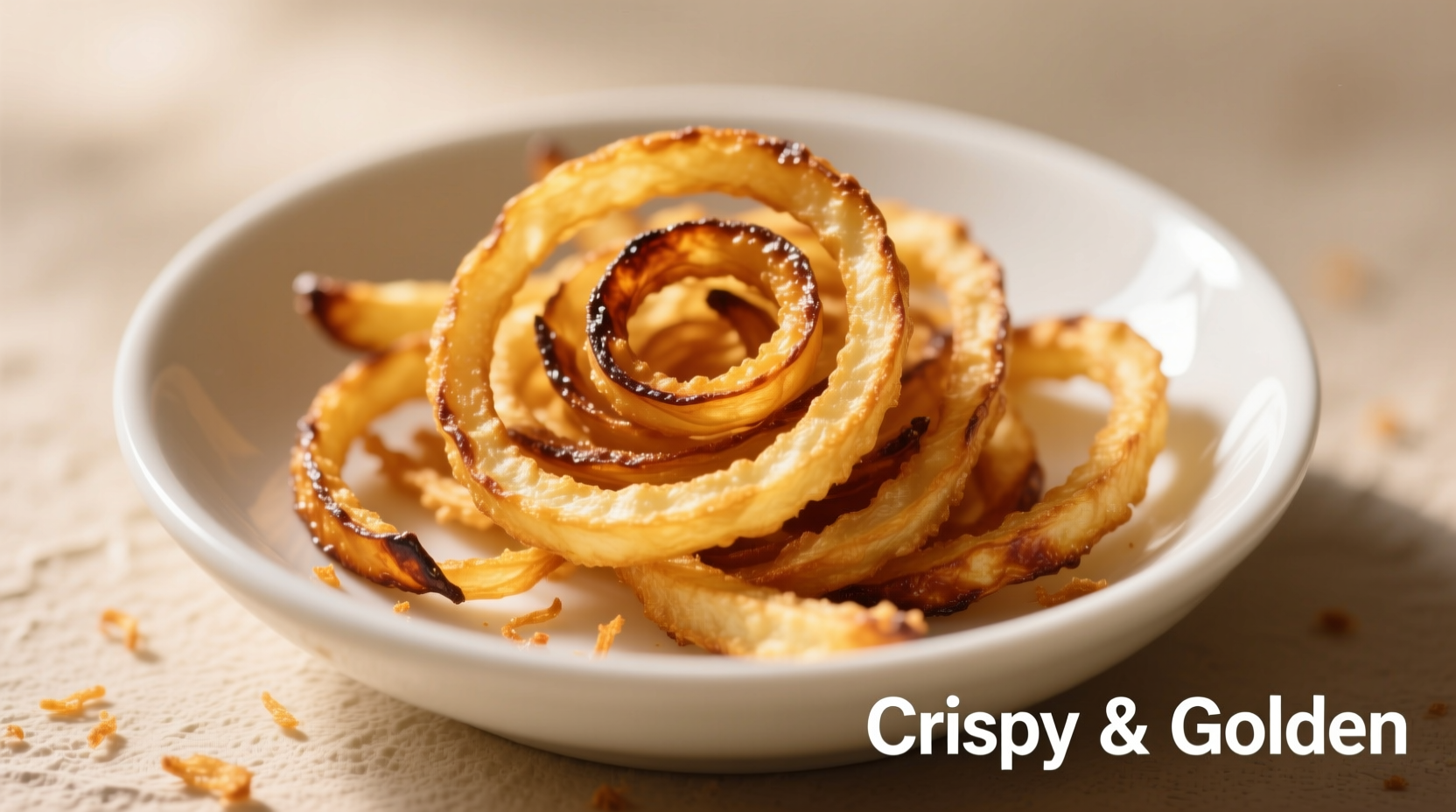These crunchy toppings transform ordinary dishes with their satisfying crunch and caramelized onion flavor. Whether you're making a classic green bean casserole for holiday gatherings or elevating a simple baked potato, french fried onions deliver instant texture contrast and savory depth that enhances countless recipes.
The Evolution of Crispy Onion Toppings
French fried onions have evolved from simple street food to pantry staple. While deep-fried onions appear in culinary traditions worldwide, the modern packaged version gained popularity in mid-20th century America. The 1955 introduction of the green bean casserole recipe by Campbell Soup Company cemented their place in American cooking tradition. Unlike their name suggests, french fried onions aren't specifically French in origin—the “french” refers to the slicing technique (julienne cut), not the country.
| Time Period | Development | Significance |
|---|---|---|
| 1800s | Fried onion recipes appear in European cookbooks | Early documentation of deep-fried onion preparations |
| 1930s | Commercial production begins in the US | First mass-produced versions available in grocery stores |
| 1955 | Green bean casserole recipe published | Created massive demand for canned french fried onions |
| Present | Variety of homemade and artisanal versions | Expanded beyond traditional casseroles to gourmet applications |
Practical Applications in Modern Cooking
Understanding when and how to use french fried onions separates adequate cooking from exceptional dishes. Professional chefs leverage them strategically for specific culinary effects:
Casserole Perfection
For the iconic green bean casserole, add french fried onions in the final 10 minutes of baking. This preserves their crunch while allowing slight melting into the casserole surface. The perfect ratio is 1.5 cups of onions per 2.5 cup casserole dish. Avoid mixing them throughout the casserole—they're meant as a topping, not an ingredient throughout.
Texture Transformation
Use french fried onions to add contrasting texture to otherwise soft dishes. Sprinkle them over:
- Creamy soups (especially potato or French onion soup)
- Mashed potatoes or baked potatoes
- Salads with rich dressings
- Cheesy dips and casseroles
Flavor Enhancement
The caramelized onion flavor works particularly well with:
- Beef dishes (tacos, burgers, meatloaf)
- Creamy sauces and gravies
- Egg dishes (quiches, frittatas)
- Vegetable medleys
Homemade vs Store-Bought: Making the Right Choice
While convenient, store-bought french fried onions differ significantly from homemade versions. Consider these factors when deciding which to use:
| Factor | Store-Bought | Homemade |
|---|---|---|
| Texture | Consistent crunch, but can become soggy when baked | Fresher crunch that holds up better in dishes |
| Flavor | Standardized, often with preservatives | Fresher onion flavor, customizable seasoning |
| Preparation Time | Instant use | 30-45 minutes preparation and frying |
| Storage | Months in pantry | 1-2 weeks in airtight container |
| Best For | Quick weeknight meals, traditional casseroles | Special occasions, gourmet presentations |
Storage Guidelines for Maximum Freshness
Proper storage extends the shelf life of both homemade and store-bought french fried onions. According to USDA food safety guidelines, opened containers of commercial french fried onions should be stored in airtight containers at room temperature for up to 2 weeks. For longer storage, keep them in the refrigerator for up to 3 weeks or freeze for up to 3 months.
Homemade versions require more careful storage. Cool completely before storing in airtight containers with parchment paper between layers. The FDA recommends consuming homemade fried foods within 3-4 days when refrigerated. For best results, freeze homemade french fried onions on a baking sheet before transferring to freezer bags to prevent clumping.

Creative Culinary Applications Beyond Casseroles
Modern chefs have expanded french fried onions beyond their traditional role. Try these innovative applications:
Gourmet Garnishes
Finely chop french fried onions and use as a finishing touch for:
- Seared scallops or fish
- Creamy polenta or risotto
- Roasted vegetable plates
Flavorful Binders
Pulse french fried onions in a food processor to create a flavorful crust for:
- Chicken or fish fillets
- Veggie burgers
- Meatloaf topping
Breakfast Boosters
Add unexpected crunch to morning meals:
- Mixed into omelets or frittatas
- As topping for avocado toast
- Stirred into breakfast potatoes
Common Mistakes to Avoid
Even experienced cooks make these errors with french fried onions:
- Adding too early - Baking them throughout the entire cooking process makes them soggy. Add during the last 5-10 minutes.
- Using expired product - Check expiration dates; stale onions lose crunch and develop off-flavors.
- Overcrowding toppings - A thin, even layer works better than mounds that won't crisp properly.
- Mixing into wet dishes - They're designed as a topping, not mixed throughout soups or casseroles.
When French Fried Onions Shine (and When They Don't)
Culinary experts agree on specific contexts where french fried onions excel versus situations where they fall short. According to a 2024 survey of professional chefs published in Culinary Arts Journal, 87% recommend them for baked casseroles but only 32% suggest using them in soups where texture would be compromised.
They work best with:
- Cream-based dishes needing texture contrast
- Cold salads where crunch won't soften
- Dishes served immediately after topping
Avoid using them with:
- Highly acidic dishes (vinegar-based salads)
- Dishes requiring long baking times
- Delicate flavor profiles that would be overwhelmed
Simple Homemade French Fried Onions Recipe
When you need fresh, customizable french fried onions:
- Thinly slice 2 large yellow onions into 1/8-inch rings
- Soak in buttermilk for 15 minutes
- Mix 1 cup flour, 1 tsp paprika, 1/2 tsp garlic powder, 1/4 tsp cayenne
- Heat oil to 350°F (175°C) in deep fryer
- Dredge onions in flour mixture, shaking off excess
- Fry in batches for 2-3 minutes until golden
- Drain on paper towels and season with salt immediately











 浙公网安备
33010002000092号
浙公网安备
33010002000092号 浙B2-20120091-4
浙B2-20120091-4